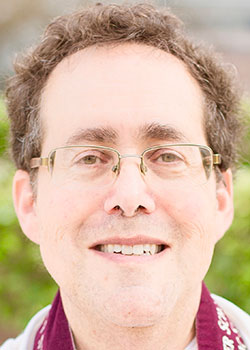We read Parashat Mi’Ketz during the celebration of Hanukkah, the commemoration of the rededication of the Holy Temple in Jerusalem almost two thousand years ago. In history, this period marks the assertion of Jewish national and religious freedom, a period of quasi independence that made it possible for Judaism to survive the onslaught of Roman rule in the centuries ahead. Spiritually, the image of a Temple rededicated invites introspection about our own internal rededication to our own highest ideals, to correlate our ways with God’s aspirations and mandate.
The miracle of the human capacity to refocus, to begin anew, to reconsecrate our deeds to a path of mindful compassion is a cause for wonder, and for real celebration, and we can see that same remarkable burst of insight and vision in this week’s Torah reading as well.
Pharaoh has a dream! Seven sturdy, healthy cows are grazing by the banks of the Nile River, when seven sickly cows consume them. The monarch’s official interpreters are befuddled and cannot correctly uncover the meaning of the dreams, but God provides insight to Joseph, the righteous prisoner, who is then able to reveal the proper interpretation.
This year, Hanukkah began on an Erev Shabbat, and ends on an Erev Shabbat. Candles are lit for Shabbat, and candles are lit for Hanukkah, and I often marvel at the miracle of the lights, and just how different they are. The lights of Shabbat stretch into Jewish antiquity, a biblical commandment that links the generations, one candle “guarding” and the other “remembering” the creation and the exodus. These two candles reflect a lofty light, the elevated holiness of Shabbat. In contrast, the lights of Hanukkah are of relatively recent vintage, reflecting the practice of the Rabbis of old, rather than the Torah itself. The Talmud records that these lights are to be placed where they can be viewed from the street, illumining the world and proclaiming the miracle of the Hanukkah story.
In his marvelous Torah commentary, Ma’or Eynayim, the Hassidic master, Rebbe Menachem Nahum of Chernobyl (18th Century Ukraine) reflects on this contrast between the elevated nature of Shabbat’s holiness and the accessible warmth of Hanukkah’s glow when he reflects:
… the holiness of Sabbath is difficult to enter; Shabbat is very high and sublime, the name of God itself. How can a person enter into something so high as Shabbat? On Hanukkah, however, God is willing to come down, right down to where the person is, in order to draw the person near.
On Shabbat, our job is to elevate our thoughts and deeds to a level so lofty that we lift ourselves into the courtyards of the Divine. Through the ancient words of prayer, through study, through the mitzvot unique to Shabbat – including refraining from prohibited labors – we refine ourselves sufficiently to rise in holiness. But such an elevated holiness is difficult to maintain. Alone as a path, it can be a rigorous and forbidding path. Hanukkah offers a complementary path – one in which holiness descends to meet us at our level, welcoming us from the place we are at.
On Hanukkah, God descends to the people; God gives them light by which they may come back to God, a light that may even lead them to the high and most ecstatic form of God’s service.
What is that “high and most ecstatic” way of integrating God’s presence? The Ma’or Eynayimcontrasts those who merely go through the motions (mitzvah observance without considering the deeper meaning or ethical purpose of the practice, Torah study without reflecting on how those teachings mandate a practice of compassion and justice), with a more mindful religious life.
There are people who perform mitzvot without any awareness of mind or understanding. … Such performance, however, cannot bring forth wisdom from above.
Hanukkah is the time to reconcile our religious observance with our moral vision, to light the world with the glow of goodness. The Festival of lights is an opportunity to rededicate our hearts and minds to a consciousness of each other’s needs, of our human connection, of our links to all of creation. By bringing awareness to our behavior, compassion to our ritual, justice to our observance, we open a path for divine wisdom to bathe our world in light.
Hanukkah is the time for a person to return to God by means of the Torah, just as happened in the days of Mattathias the High Priest. The Hellenists had defiled all the oil; all of wisdom had been corrupted. There remained but a single container of wisdom, that of Torah. … The oil of the candles refers to wisdom… teaching man how to serve God in a higher contemplative way.
This year, may your lights burn bright, your service be wholehearted and mindful, and your illumination become a source for true liberation and joy!
Shabbat Shalom and Hanukkah Sameach!

